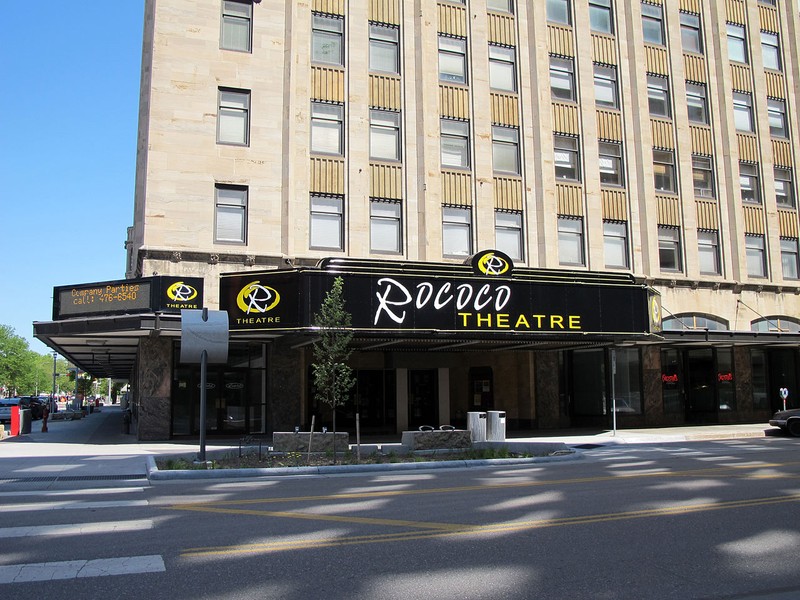Stuart Building
Introduction
Text-to-speech Audio
The Stuart Building was the city's premier office building for many years. It was erected in 1929 and also houses the Rococo Theatre, which was originally called the Stuart Theatre. The building is also significant for its Art Deco and Gothic Revival design. Art Deco features include the stepped back massing at the top and fluted spandrels, and Gothic Revival elements are seen in the tracery and gargoyles. The building was converted into condominiums in the mid-1980s and is now known as University Towers. It was added to the National Register of Historic Places in 2003.
Images
Now a condominium residence known as University Towers, the historic Stuart Building was the city's most prestigious office building for several decades. Built in 1929, it also houses the Rococo Theatre, which was first called the Stuart Theatre.
_from_NW_2.jpg)
Several gargoyles are located at the top of the building.
_W_gargoyle_1.jpg)
The theater originally had 1,850 seats and showed movies and hosted large stage productions.

Backstory and Context
Text-to-speech Audio
The head of a family business called the Stuart Investment Company, Charles Stuart, constructed the building. It was designed by local architect Ellery L. Davis, who was the city's leading architect in the first half of the 20th century (the architecture firm he established continues to operate today as Davis Design). When it opened, the Stuart Building featured office spaces and a private club on the top floor.
The Stuart Theatre had 1,850 seats, an orchestra pit, and large dressing rooms and backstage areas. It was designed to host both big stage productions and movies. In terms of architecture, the theater's design is primarily Italian Romanesque but it includes elements of Moorish Revival and other styles as well. It appears that stage productions gradually ended and movies became the sole attraction at the theater. In 1943, it became a subsidiary of Paramount Pictures. In the 1970s, the theater was altered significantly by a new operator, the Dubinsky Brothers Theatres, which carpeted the walls, bricked off the stage, and installed a drop ceiling that concealed the ornate ceiling, third-floor balcony, and chandeliers. In the early 2000s, the theater was restored and renamed the Rococo Theatre. The work included installing new video production equipment, building a kitchen in the basement, and adding Vegas-style booths and tables. The theater shows movies, hosts live acts, and is available to rent for wedding receptions and other events.
Sources
"History." Rococo Theatre. Accessed April 14, 2022. https://rococotheatre.com/history.
Kolbet, Sharon. "Rococo Theatre brings restored glory to Lincoln." The Daily Nebraskan. June 12, 2001. https://www.dailynebraskan.com/rococo-theatre-brings-restored-glory-to-lincoln/article_20e9845f-b24b-56c6-8053-335cad332a9a.html.
"Rococo Theatre." Cinema Treasures. Accessed April 15, 2022. http://cinematreasures.org/theaters/1820.
"University Towers & Rococo Theatre." Society of Architectural Historians. Accessed April 15, 2022. https://sah-archipedia.org/buildings/NE-01-109-0035.
Zimmer, Edward & Murphy, David. "The Stuart Building." National Park Service - National Register of Historic Places Nomination Form. December 23, 2003. https://npgallery.nps.gov/GetAsset/32b3780f-52c4-4f17-8704-140c09f0190e.
All images via Wikimedia Commons: https://commons.wikimedia.org/wiki/Category:Stuart_Building_(Lincoln,_Nebraska)
